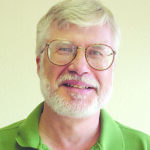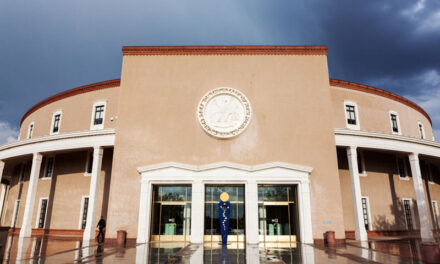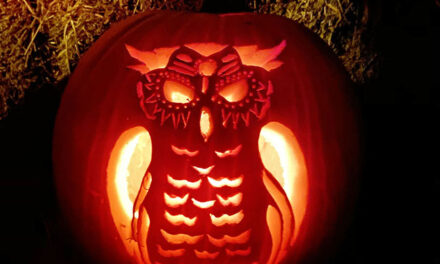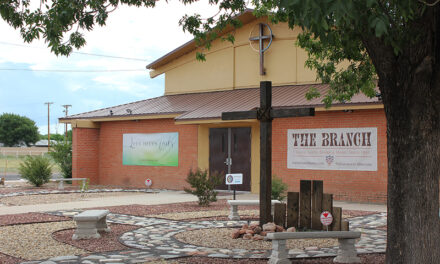You can tell a lot about a town and its citizens by what they celebrate with their festivals or fiestas. Hatch has its chile, Roswell has its UFOs, Deming has its ducks, Albuquerque has its balloons and Pie Town has its pies.
For 230 years, Belen has had its Our Lady of Belen Fiestas. It has also had the World’s Largest Matanza since 2000. But in the 1920s and 1930s, Belen had another celebration that was almost as famous and as well-attended as its present-day fiestas and matanzas: the Days of ’49.
What was this community event and what made it so popular in Belen and many other towns? What activities filled these days and nights with old-fashioned merriment? And what do the Days of ’49 tell us about Belen and its people in the decades between World War I and World War II?
Birth of the ’49ers
On Jan. 24, 1848, miners discovered gold nuggets on Sutter’s Creek east of Sacramento, Calif. Word of the discovery spread around the world, causing one of the largest gold rushes in modern history. Thousands arrived by 1849. Some got rich quick. Most did not.
Regardless of their economic fate, the men and women who participated in the California gold rush became legendary figures of the Old West. By the early 20th century these new heroes, known as the ’49ers, were celebrated in countless songs, poems, movies and popular novels.
Proud of their victory in World War I, many Americans of the 1920s celebrated their patriotism with parades, rallies and elaborate Fourth of July celebrations. The people of Sacramento, including some whose ancestors had arrived with the gold rush, decided to celebrate their history with a six-day event filled with old-fashioned amusement from May 23-28, 1922.
News of Sacramento’s new holiday spread, especially among patriotic organizations like the newly-organized American Legion. One of the first Days of ’49 in New Mexico was organized by Herman G. Baca and American Legion Post No. 19 in Belen in May 1926.
Using Belen’s celebration as a successful model, Days of ’49 events were held across New Mexico, including in Silver City by 1927, Tucumcari by 1929, Raton by 1930, Bernalillo, Kingston and Hillsboro by 1932, Gallup and Las Vegas by 1935 and Santa Fe by 1943. Belen held a second event in 1939.
Appropriately, the New Mexico School of Mines (now New Mexico Tech) held Days of ’49 events from 1921 to 1940 and in the post-World War II era from 1946 to 1960.
Beards and costumes galore
Since facial hair was popular among miners in 1849, it made sense for men to grow their whiskers during the Days of ’49. In fact, in Belen and most towns, men were required to grow whiskers for the duration of the celebration.

Jim Sloan collection
First National Bank employees dressed in Days of ’49 costumes in 1939. Pictured, in front, from left, are Marion Herlihy and Jean Moore; in back, from left, Jean Adams, Harry Culver, Doris Corley, Lois Sanderson and Stella Becker.
In 1939, a newspaper reporter visited Belen and found that “there are black beards, brown ones, red ones and even gray ones, all shaved and trimmed to every conceivable shape.” The reporter added that “Seemingly only one group is not enthusiastic about the whiskers and it is the women.”
While enthusiastic men won prizes for growing their beards, less cooperative males received punishments if they refused to sprout whiskers. Kangaroo courts were established in many communities, including Socorro where court was held on the plaza. Humorous penalties ranged from small fines to temporary banishment from town.
Community leaders also offered prizes for the best costumes. In 1926, the people of Belen wore every kind of old-time attire, from top hats for men to dance hall dresses for women.
Former Valencia County Sheriff Joe Tondre wore the uniform of a frontier army officer. Then-sheriff Antonio Archuleta impersonated an Indian scout. In 1939, Belen was said to be “completely overrun with bright shirts, cowboy boots and 10-gallon hats.”

Jim Sloan collection
Jean Moore, Rev. Joseph Peterson, Marion Herlihy and Dr. Edward Brentari dressed for the Days of ’49, 1939.
Women wore their hair in old-fashioned styles. Most wore long calico skirts and bonnets. Women won prizes for their fashions in categories like “Diamond Lil,” “Old Lady of ’49,” “Young Lady of ’49” and “Cowgirl.”
Parades, speeches and human icicles
Days of ’49 celebrations were nearly as famous for their parades as for their costumes and beards. A Days of ’49 parade in Belen took 30 minutes to pass by a reviewing stand built at the intersection of Becker Avenue and Main Street.
Floats were sponsored by civic organizations, businesses and social clubs. Vehicles included buckboards, covered wagons, stage coaches and even an elaborate coach owned by Felipe Chavez, once Belen’s richest citizen.
Many Days of ’49 started with speeches by political leaders. In 1939, Belen’s celebration began with five speeches, including addresses by former Gov. Clyde Tingley and the state’s attorney general, Filo Sedillo, of Belen.
Once the speeches had ended, the crowd witnessed one of the most unusual acts ever performed on a Days of ’49 schedule. Jimmy Jones performed as the “Human Icicle.”
“Human icicle” acts were famous in 1939 after one such act appeared at the New York World’s Fair. The act featured female performers who were submerged in hundreds of pounds of ice to see how long they could endure the cold.
The act became notorious when New York City police arrested two young women performers at the World’s Fair for reportedly wearing little more than their smiles. Exploiting the publicity of these arrests, women from the vaudeville act performed similar feats in towns from coast to coast.
Although Jimmy Jones’s act in Belen was not nearly as sensational, it did draw a large crowd of local residents who went to see Jones be placed in ice and hopefully be pulled out after 60 minutes.
A witness wrote that once Jones survived the ordeal, four men rubbed him down with alcohol to stimulate his blood circulation and help get him warm. According to one witness, Jones “was no worse for the experience, unless the cheers hurt his ears.”
Other events
Games of chance drew many people to Days of ’49 events. Felipe Chavez’s old mansion in Belen was converted into a Monte Carlo palace during the Days of ’49 in 1939.
In 1924, Socorro’s Days of ’49 organizers had to rent a roulette wheel from the local justice of the peace, who had secured it in a raid in 1924. Two years later, leaders from Belen went all the way to Gallup to pick up a roulette wheel, probably acquired in a similar fashion.
Many Days of ’49 scheduled baseball games, races and tug-of-wars over muddy pits, with predictable results. Fireworks were regular nightly attractions. Belen’s first celebration in 1926 included fireworks that displayed not only the Stars and Stripes, but also the flags of our World War I allies, England and France. Lively music and dances followed.
Despite their popularity, Days of ’49 celebrations had their share of problems. With 10,000 people in attendance in 1939, traffic jams were inevitable in Belen. Every available parking space on Main Street was taken.
The parade was 45 minutes late in getting started. A short rain shower followed a typical spring dust storm.
Entertainment changed
Days of ’49 remained popular until the end of the Great Depression and the start of World War II. Except for the Fourth of July and war bond rallies, most towns did not hold celebrations during the war as most citizens focused on winning the conflict overseas.
The country and its entertainment changed considerably after the war. Rather than participate in events like the Days of ’49, many Americans preferred to be spectators with the introduction of television, transistor radios and other forms of sedentary amusement. Only Magdalena’s Frontier Festival and Estancia’s Old Timers Day resemble the Days of ’49 in New Mexico today.
If you can tell a lot about a town by its celebrations, communities like Belen celebrated the Days of ’49 because the event reminded them of old values and old ways of having fun. Nostalgic events help slow a rapidly spinning world, if only for brief, joyful moments of time.
(La Historia del Rio Abajo is a regular column about Valencia County history written by members of the Valencia County Historical Society since 1998.
The author appreciates the generous assistance that Ronnie Torres and the late Jim Sloan provided in the preparation of this article.
Opinions expressed in this and all columns of La Historia del Rio Abajo are the author’s alone and not necessarily those of the Valencia County Historical Society or any other group or individual.)

Richard Melzer, guest columnist
Richard Melzer, Ph.D., is a retired history professor who taught at The University of New Mexico–Valencia campus for more than 35 years. He has served on the board of directors of the Valencia County Historical Society for 30 years; he has served as the society’s president several times.
He has written many books and articles about New Mexico history, including many works on Valencia County, his favorite topic. His newest book, a biography of Casey Luna, was published in the spring of 2021.
Those interested in joining the Valencia County Historical Society should contact Dr. Melzer at [email protected].



















